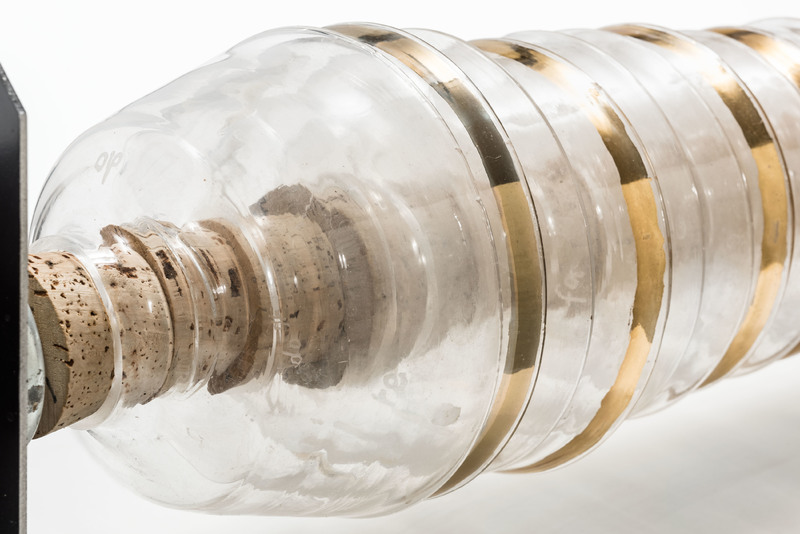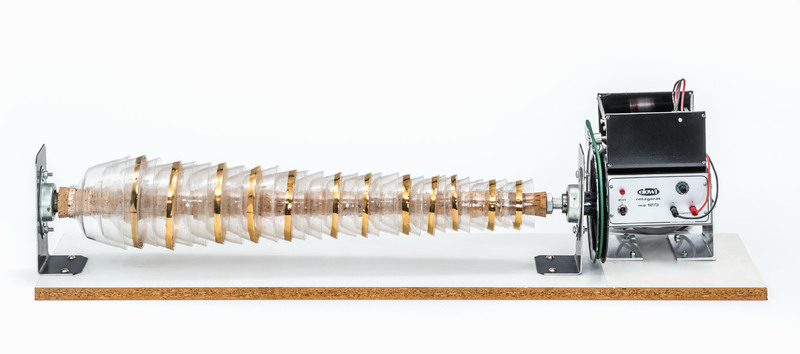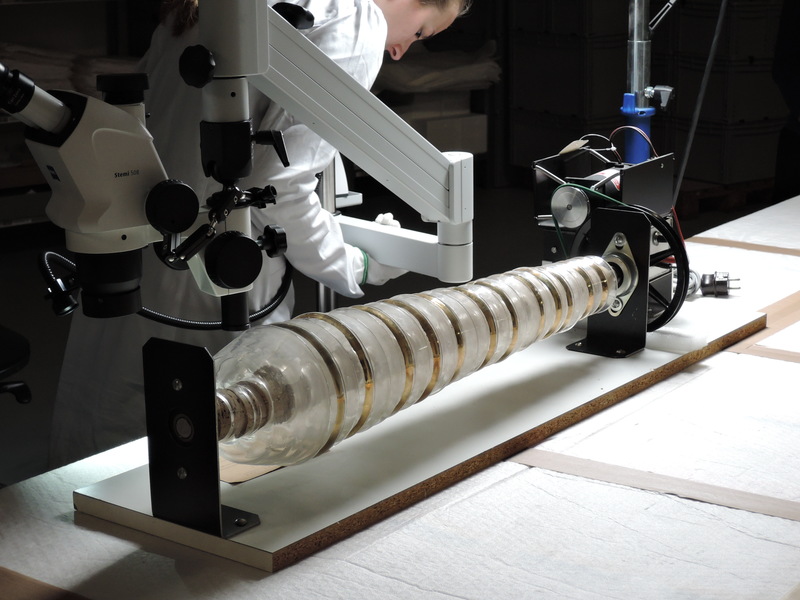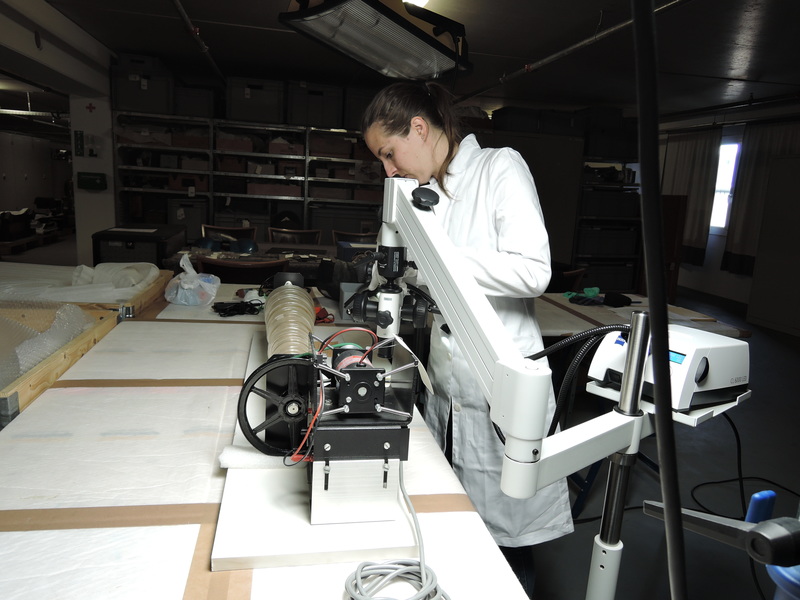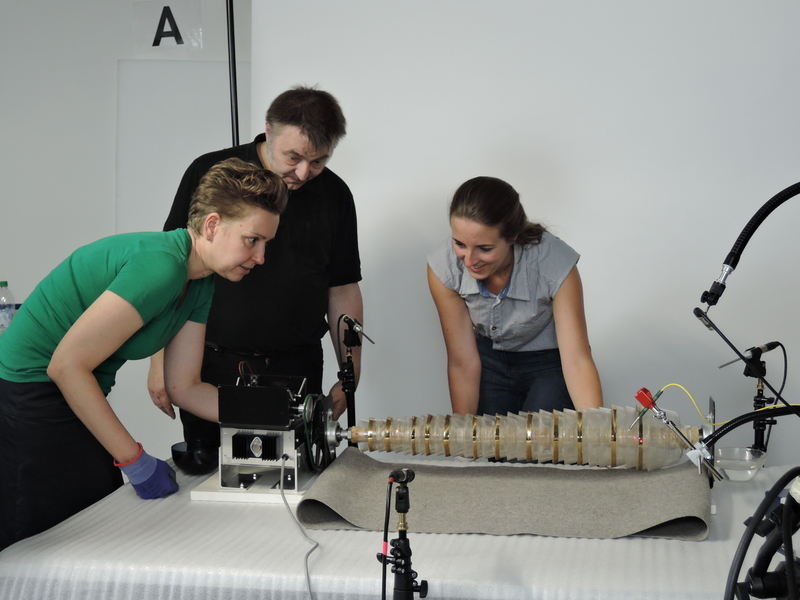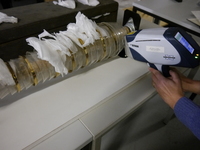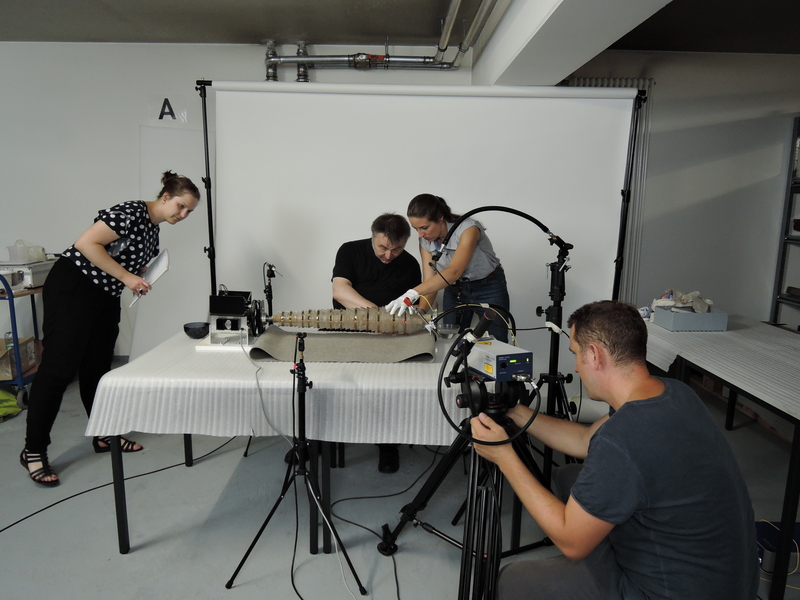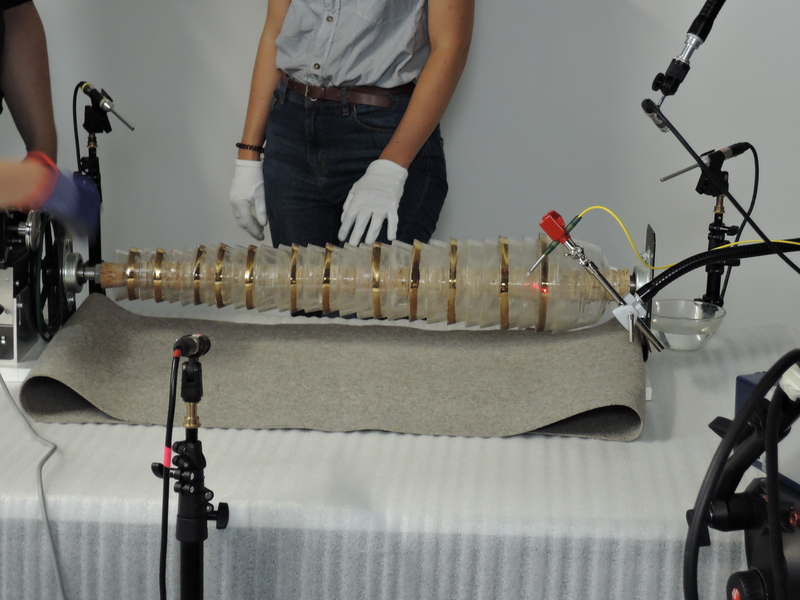Motorized version
Glass harmonica, Gerhard Finkenbeiner, Waltham, Mass. (USA) 1983, Inv. No. 1988-1
Enthusiasm for the glass harmonica waned in the first half of the 19th century. It was still used for the musical performance of extraordinary and supernatural effects, for example by Gaetano Donizetti in the famous mad scene in Act 3 of Lucia di Lammermoor, which premiered in Naples in 1835. Later, Richard Strauss used it in Frau ohne Schatten (premiere: Vienna, 1919) to represent the words “Kristall” (crystal) and “Sternenglanz” (starlight). In neither case, however, was it played in the premiere, but replaced by similar-sounding instruments such as the flute. This is certainly because it was no longer easy to find suitable instruments or players at that time.
In recent decades, however, glass instruments have experienced a real revival. This can be seen from instruments made on the East Coast of the US. In the second half of the 20th century, glassblower Gerhard Finkenbeiner (1930–1999) became very interested in the glass harmonica, which had by then fallen into oblivion. He developed a modern version featuring quartz glass and an electric motor. Finkenbeiner also produced glass apparatuses for chemical laboratories.
The Deutsches Museum has had a Finkenbeiner glass harmonica since 1988. It has a tonal range from c1 to e3. 29 glass calottes are mounted on an axle and affixed by cork sleeves. Gold stripes inside the glass bowls mark the semitones. The instrument is playable, but the axle is slightly out of balance, which can cause the lowest bowls to slip.
We recorded it on August 1, 2018 in a depot of the Deutsches Museum. In addition to individual tones, the Augsburg musician and musicologist Bruno Kliegl also recorded the Sicilienne attributed to Maria Theresa von Paradis and a Largo in G minor by Johann A. P. Schulz. The instrument’s motor has 12 available speeds; of these, the fifth was the most suitable.
Musical examples
Click here to play the glass harmonica.
For a material analysis of the glass harmonica, click here.
Outlook
In addition to the acoustic and material-technical investigation, the harmonica’s sounding glass calottes were examined with a laser Doppler vibrometer. Prof. Dr. Christian Grosse and Manuel Raith from the Technical University of Munich provided the device plus their expertise to measure the mechanical vibration of the glass bowls. Glass, however, is a particular challenge for this measuring method due to its transparency, since optical reflection is fundamental for the laser. For this reason, the gold edges of the shells were targeted and the natural resonance of the material and the deflection of the shells during rotation were measured. The data are still being evaluated. A first point of reference has been provided by the deflection of the deep shells at about 50 micrometers. Ideally, measurements of similar instruments with opaque surfaces should follow.
Related literature
George Bissinger, David Oliver: “3-D Laser Vibrometry on Legendary Old Italian Violins”, in: Sound and Vibration (July 2007), pp. 10–14.
Gerhard Finkenbeiner, Vera Meyer: “The Glass Harmonica: A Return from Obscurity”, Leonardo 20/2 (1987), pp. 139–142.
Conny Restle: “Richard Strauss und die Glasharmonika”, in: Musica instrumentalis 1 (1998), pp. 24–46.
Citation: Rebecca Wolf, ‘Glass sounds or the fascination of transparency’, in: Materiality of Musical Instruments. A Virtual Exhibition.

